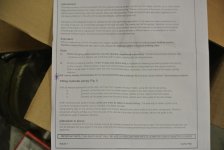Offline
I'll be converting my system to DOT 5. Would be interested in hearing if anyone has done this with existing equipment - i.e. flushing the existing system and just installing the fluid.
I saw on another forum you can use methylated spirits (denatured alcohol). I'm thinking 99% isopropyl from the drug store would also work.
Experience-based comments?
I saw on another forum you can use methylated spirits (denatured alcohol). I'm thinking 99% isopropyl from the drug store would also work.
Experience-based comments?

 Hi Guest!
Hi Guest!

 smilie in place of the real @
smilie in place of the real @
 Pretty Please - add it to our Events forum(s) and add to the calendar! >>
Pretty Please - add it to our Events forum(s) and add to the calendar! >> 


